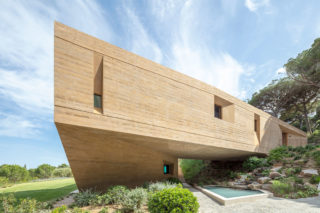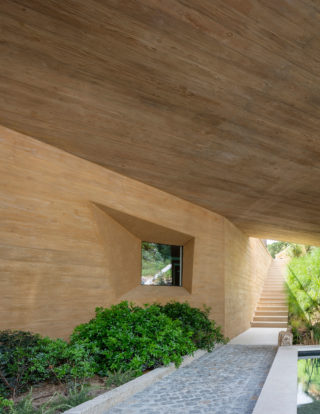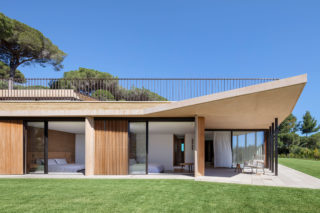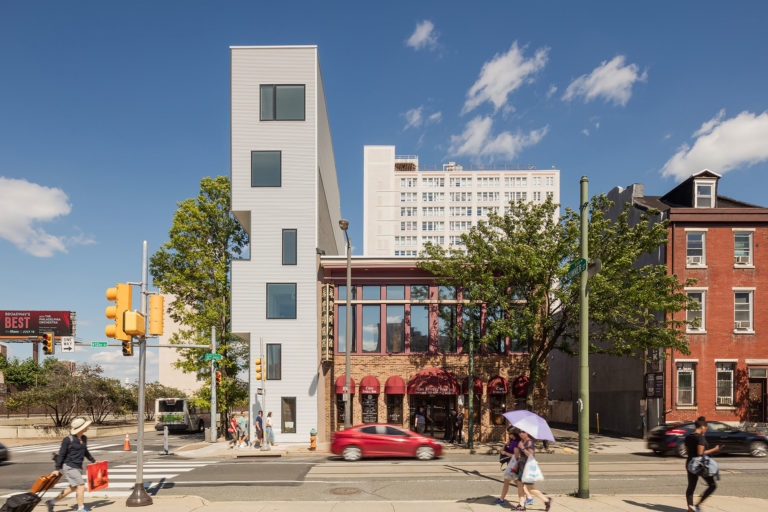In the South of France, sited on a hill of olive trees, stone pines, and a vineyard, a family retreat was designed with a mission of maintaining the vitality of the site. An agricultural plot, the family aimed to cultivate the landscape as part of their stewardship. This resulted in the integration of landscape and house through the production of a monumental, vaulted threshold to a central courtyard. For centuries, the enclosed courtyard has been overlaid on various geographic settings—each time transformed according to the climate, rituals, and construction practices of the place. A vehicle to capture the outdoors within the building, the courtyard is defined by its interiority. The slipped court of this project provides simultaneous interiority and exteriority—protected as well as engaged. The resulting vault is a ruled surface that mediates between the geometry of a stair, the pool, and living areas above. The house respects strict zoning guidelines and regional vernacular materials and construction processes, while leveraging the sloping terrain and producing sustainable systems for amplification and cultivation. Beneath the roof are the primary living, eating, and sleeping spaces. The lower wing is conceived as a street-corridor, activated by a reading room and bunk rooms that open directly onto the landscape. Many of the living spaces of this house are outdoors, taking advantage of varying views, times of the day, and public vs. private moments. For this reason, the architecture of the house extends into the landscape, retains it, and frames spaces in between.
Project facts
Location France
Architect NADAAA
Architect Bidard & Raissi
Project Team Atrium & Arhami; Corso Europa; ECI; Inedit; Jean Mus; Livewire; Mauro; Simpson; TPFI
Category Residential
AIANY Recognition
2020 Residential Design Awards














